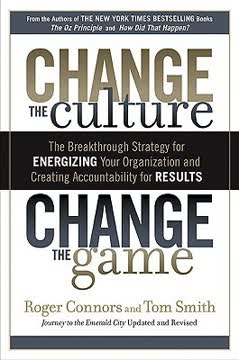Key Takeaways
1. Culture is a choice: Manage it or be managed by it.
Either you will manage your culture, or it will manage you.
Culture's pervasive influence. Every organization has a culture, whether intentionally cultivated or not. This culture, defined as the way people think and act, profoundly impacts success or failure. Leaders must recognize that culture is not a passive element but an active force.
Alaris Medical Systems. Alaris transformed its culture from one of survival to one of accountability, leading to a dramatic increase in share price and revenue growth. This turnaround highlights the power of proactive culture management.
Take control. Leaders must make a conscious choice to manage their culture, shaping it to align with desired outcomes. Neglecting culture allows it to develop haphazardly, potentially undermining strategic goals and hindering performance.
2. The Results Pyramid: A framework for culture change.
Experiences foster beliefs, beliefs influence actions, and actions produce results.
Interconnected elements. The Results Pyramid illustrates how experiences, beliefs, and actions are interconnected. Experiences shape beliefs, which drive actions, ultimately determining results. This model provides a roadmap for understanding and influencing organizational culture.
Culture produces results. The culture of an organization directly produces the results it achieves. If the results are undesirable, leaders must examine and adjust the underlying cultural elements.
Altering the pyramid. By strategically intervening at any level of the pyramid, leaders can initiate a cascade of change. However, focusing on both the top (actions and results) and bottom (experiences and beliefs) is crucial for lasting transformation.
3. Accountability: The cornerstone of a high-performing culture.
At the end of the day, greater accountability produces greater results.
Accountability defined. Accountability, when done right, is a positive and enabling principle, not a punishment. It involves taking ownership of results, both individual and organizational, and proactively seeking solutions.
Above and Below the Line. The Oz Principle introduces the Steps to Accountability: See It, Own It, Solve It, and Do It. These steps represent Above the Line thinking, contrasting with the Below the Line blame game and victim cycle.
Culture of Accountability. A Culture of Accountability fosters transparency, teamwork, effective communication, and a focus on results. It empowers individuals to take initiative and contribute to organizational success.
4. Define R2: Clarity on desired results is paramount.
It makes no sense to initiate any culture building activity or process unless you intend to increase the capability of the organization to deliver results.
R1 vs. R2. R2 represents the desired results, which may differ from the current results (R1) due to increased difficulty, a change in direction, a need for resource deployment, or the development of new capabilities.
Alignment around R2. It is crucial for leaders to ensure that everyone in the organization is aligned around the key R2 results. Confusion about results can lead to poor execution and undermine the culture change effort.
Opthometrics example. Opthometrics successfully improved its business results by aligning its Brand Leadership Team around R2 and conducting a pilot test to demonstrate the impact of culture change. This pilot test showed a significant impact on the business before the company made a go-forward decision to launch the culture change effort worldwide in all of its retail stores.
5. Actions speak louder: Shift behaviors to drive change.
The single most important change in actions that needs to occur during a time of cultural transition is the shift to greater accountability.
Accountability in action. Shifting from A1 (current actions) to A2 (desired actions) requires a focus on greater accountability. This involves getting employees to invest fully in achieving results and take personal ownership of their work.
Three levels of change. The Input/Output Change Model identifies three levels of organizational change: temporary, transitional, and transformational. A Level Three Change, requiring a significant shift in thinking and acting, is essential for full-scale cultural transition.
Stop, Start, Continue. To facilitate the shift to A2, leaders should identify what actions need to be stopped, started, and continued. This analysis helps to clarify the desired behaviors and guide the change effort.
6. Beliefs drive behavior: Target beliefs for lasting impact.
If you change the way people think, you will change the way they act.
Beliefs matter. Focusing on beliefs, the bottom of the Results Pyramid, is crucial for lasting change. By helping people adopt new beliefs (B2), leaders can motivate the desired actions (A2) and achieve R2 results.
Common misconceptions. Misconceptions about working with beliefs, such as the belief that they are too hard to discern or change, often prevent leaders from addressing this critical element of culture.
Categories of beliefs. Beliefs can be categorized as Category 1 (easily changed), Category 2 (strongly held), or Category 3 (deeply ingrained). Culture change efforts should primarily focus on shifting Category 1 and 2 beliefs.
7. Experiences shape beliefs: Create the right environment.
The experiences you provide create the beliefs people hold.
Experiences are foundational. Experiences form the foundation of the Results Pyramid, shaping the beliefs that drive actions. Leaders must become proficient at creating the right experiences (E2) to instill desired beliefs (B2).
Amy's Ice Creams. Amy's Ice Creams demonstrates the power of creating experiences to manage culture. By fostering a fun and creative environment, the company cultivates a unique brand identity and achieves market success.
Four types of experiences. Experiences can be categorized as Type 1 (clear and meaningful), Type 2 (requiring interpretation), Type 3 (dismissed as normal), or Type 4 (undermining the culture). Leaders should strive to create Type 1 and 2 experiences.
8. Alignment is key: Ensure everyone is on the same page.
Alignment is common beliefs and concerted action in collective pursuit of a clear result.
Defining alignment. Alignment involves adjusting the parts of the culture so that they are properly positioned in relation to one another. It requires common beliefs and concerted action in pursuit of a clear result.
Forces of misalignment. Various forces, such as lack of clarity, poor communication, and conflicting priorities, can push an organization out of alignment. Leaders must be vigilant in identifying and addressing these threats.
Leadership Alignment Process. The Leadership Alignment Process provides a framework for achieving alignment, emphasizing participation, accountability, discussion, ownership, communication, and follow-up.
9. Culture Management Tools: Focused Feedback, Storytelling, and Recognition.
The C2 best practices are high-leverage activities that help move the boulder forward and build the desired culture.
Focused Feedback. Focused Feedback, both appreciative and constructive, helps to clarify desired behaviors and provide guidance for improvement. It should be centered on the Cultural Beliefs.
Focused Storytelling. Focused Storytelling involves sharing stories that exemplify the Cultural Beliefs, reinforcing their importance and showing people how to put them into practice.
Focused Recognition. Focused Recognition provides positive reinforcement for demonstrating the Cultural Beliefs and achieving desired results. It can be implemented through recognition cards or other forms of appreciation.
10. Lead the change: Model the desired culture.
Every leader is empowered, by virtue of his or her position, with the visibility and authority either to spearhead or to undermine the transition to the new culture.
Leadership's crucial role. Leaders must take personal ownership of the culture change effort and model the desired behaviors. Their actions send a powerful message to the organization about the importance of the transition.
Three leadership skills. To effectively lead culture change, leaders must develop three key skills: the skill to Lead the Change, the skill to Respond to Feedback, and the skill to Be Facilitative.
Methodology for Changing Beliefs. The Methodology for Changing Beliefs provides a structured approach for leaders to respond to feedback and create experiences that shift beliefs. It involves identifying the belief, stating the desired belief, describing the experience, seeking feedback, and enrolling others in providing feedback.
Last updated:
FAQ
1. What is "Change the Culture, Change the Game" by Roger Connors about?
- Organizational Culture Transformation: The book provides a step-by-step methodology for transforming organizational culture to achieve better business results.
- Results Pyramid Model: It introduces the Results Pyramid, which links experiences, beliefs, actions, and results, showing how culture drives outcomes.
- Culture of Accountability: The core message is that creating a Culture of Accountability at every level is essential for sustained success.
- Practical Tools and Case Studies: The book is filled with real-world examples, case studies, and actionable tools for leaders to implement culture change.
2. Why should I read "Change the Culture, Change the Game" by Roger Connors?
- Proven Methodology: The book offers a tested, commonsense approach to energizing organizations and creating accountability for results.
- Leadership Competency: It teaches leaders how to manage and shift culture, a critical but often overlooked management skill.
- Accelerated Change: The strategies help organizations achieve rapid, sustainable improvements in performance and morale.
- Real-World Success Stories: The book includes numerous case studies from top-performing companies, demonstrating the effectiveness of its methods.
3. What are the key takeaways from "Change the Culture, Change the Game"?
- Culture Drives Results: Organizational culture—how people think and act—directly determines business outcomes.
- Accountability is Central: A Culture of Accountability, where everyone takes ownership for results, is the most effective culture.
- Results Pyramid Framework: Experiences shape beliefs, beliefs drive actions, and actions produce results; leaders must work at all levels.
- Implementation and Integration: Sustainable change requires both implementing new practices and integrating them into daily routines and systems.
4. How does the Results Pyramid model work in "Change the Culture, Change the Game"?
- Four Levels: The Results Pyramid consists of Results, Actions, Beliefs, and Experiences, stacked from top to bottom.
- Experiences Shape Beliefs: The foundation is that experiences (E) create beliefs (B), which then drive actions (A) that produce results (R).
- Change at All Levels: Focusing only on actions and results leads to compliance, not commitment; real change requires addressing beliefs and experiences.
- Leaders’ Role: Leaders must consciously create experiences that foster the right beliefs to drive desired actions and achieve key results.
5. What is a "Culture of Accountability" according to Roger Connors?
- Definition: A Culture of Accountability exists when people at every level make the personal choice to take ownership for achieving organizational results.
- Steps to Accountability: The model includes four steps—See It, Own It, Solve It, Do It—encouraging proactive, solution-oriented behavior.
- Above the Line vs. Below the Line: "Above the Line" thinking is accountable and empowering, while "Below the Line" is blame-oriented and victimizing.
- Empowerment, Not Punishment: True accountability is about enabling success, not assigning blame for failures.
6. How do leaders implement culture change using the advice in "Change the Culture, Change the Game"?
- Define Desired Results (R2): Leaders must clearly articulate the new results the organization needs to achieve.
- Align Around Key Results: Ensure everyone understands and is committed to these results, eliminating confusion and mixed messages.
- Identify and Shift Beliefs: Leaders must uncover current beliefs (B1) that hinder progress and foster new beliefs (B2) that support desired actions.
- Create the Right Experiences: Leaders should deliberately provide experiences (E2) that instill the necessary beliefs for change.
7. What are the C2 Best Practices described in "Change the Culture, Change the Game"?
- C2 Culture: Refers to the new, desired culture needed to achieve R2 results, building on the strengths of the current culture (C1).
- Best Practices Map: The book outlines a map of best practices for accelerating and sustaining culture change, including alignment, tools, and leadership skills.
- Implementation and Integration: Emphasizes both the initial rollout of new practices and their ongoing integration into meetings, systems, and daily routines.
- Culture Management Tools: Focused Feedback, Focused Storytelling, and Focused Recognition are highlighted as essential tools for reinforcing the new culture.
8. What are the three Culture Management Tools in "Change the Culture, Change the Game" and how are they used?
- Focused Feedback: Regular, specific feedback centered on Cultural Beliefs, both appreciative and constructive, to reinforce desired behaviors.
- Focused Storytelling: Sharing stories that exemplify the Cultural Beliefs in action, making abstract concepts tangible and memorable.
- Focused Recognition: Publicly acknowledging and rewarding individuals for demonstrating the Cultural Beliefs, boosting morale and reinforcing change.
- Integration: These tools are most effective when embedded into existing meetings and processes, not treated as add-ons.
9. How does "Change the Culture, Change the Game" advise organizations to align and sustain culture change?
- Leadership Alignment: Senior leaders must be fully aligned around the desired results, cultural shifts, and the use of management tools.
- Ongoing Process: Alignment is not a one-time event but requires constant vigilance and adjustment as results and environments change.
- Critical Mass: Achieving a "critical mass" of buy-in among key influencers accelerates the cultural chain reaction.
- Process Controls: Embedding language, tracking progress, and using assessments help keep the change effort honest and on track.
10. What is the role of beliefs and experiences in driving actions and results, according to "Change the Culture, Change the Game"?
- Beliefs Drive Actions: What people believe about "how things are done around here" directly influences their daily actions.
- Experiences Shape Beliefs: Leaders must create intentional experiences that challenge old beliefs and foster new, supportive ones.
- Category 1 and 2 Beliefs: The book distinguishes between easily changed beliefs and deeply held ones, focusing on shifting those that impact performance.
- Interpretation Matters: Experiences often require explicit interpretation to ensure they foster the intended beliefs.
11. How does "Change the Culture, Change the Game" recommend enrolling the entire organization in culture change?
- Start with Accountability: Begin by defining clear results and ensuring everyone takes ownership for achieving them.
- Prepare People for Change: Gain both intellectual agreement and emotional involvement to move people from compliance to true buy-in.
- Begin with the Top: Change must start with the relative top and intact teams, cascading through the organization.
- Design for Involvement: Use participative processes, peer-to-peer accountability, and creative engagement to maximize buy-in and creativity.
12. What are the best quotes from "Change the Culture, Change the Game" by Roger Connors and what do they mean?
- "Either you will manage your culture, or it will manage you." — Emphasizes the necessity for leaders to take active responsibility for shaping culture.
- "Accountability produces results." — Highlights the central thesis that accountability, when done right, is the foundation of organizational success.
- "All behavior is rewarded." — Reminds leaders that every action, even ineffective ones, persists because it is somehow reinforced by the culture.
- "If you change the culture, you will change the game." — Summarizes the book’s core promise: culture change is the lever for breakthrough results.
- "Above the Line, people move forward, get results, and feel satisfied in their work." — Encourages adopting a proactive, solution-oriented mindset for both individuals and organizations.
Review Summary
Change the Culture, Change the Game receives mixed reviews. Some readers find it insightful and practical, praising its accountability framework and cultural change strategies. Others criticize it as repetitive, overly complex, and lacking substance. Positive reviews highlight its valuable tools for leaders and managers, while negative reviews argue it could have been condensed into a shorter format. The book's focus on organizational culture and accountability is appreciated by some, but others find the concepts too basic or difficult to implement. Overall, opinions are divided on its effectiveness and readability.
Similar Books

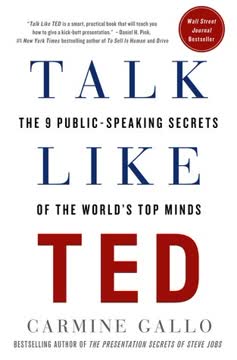
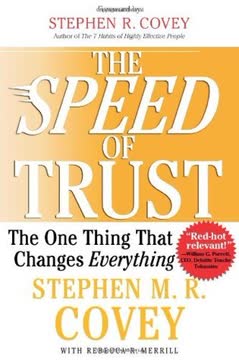


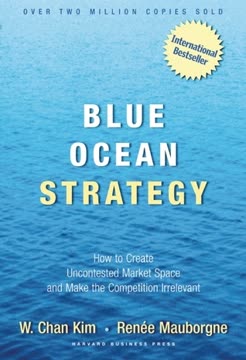
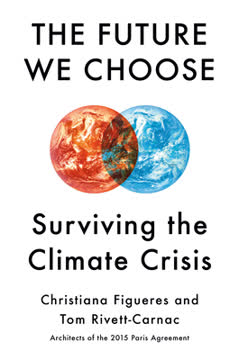
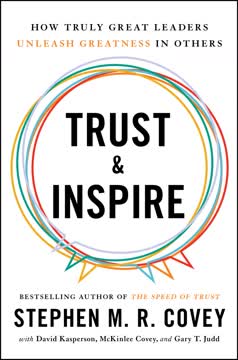

Download PDF
Download EPUB
.epub digital book format is ideal for reading ebooks on phones, tablets, and e-readers.
